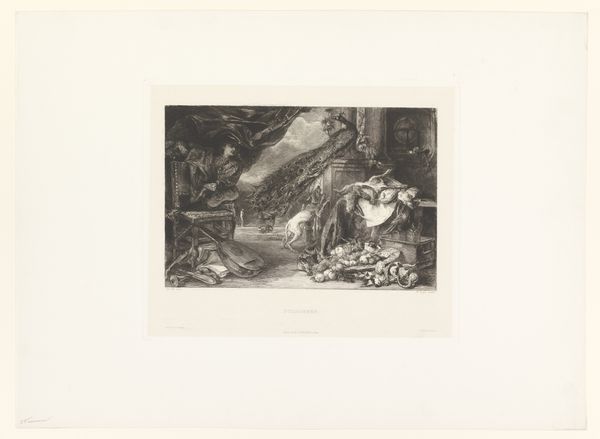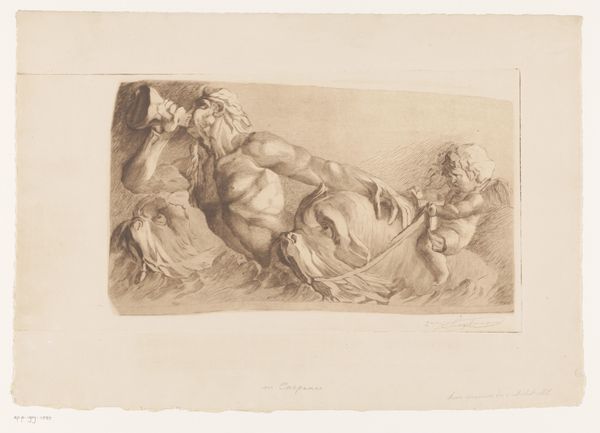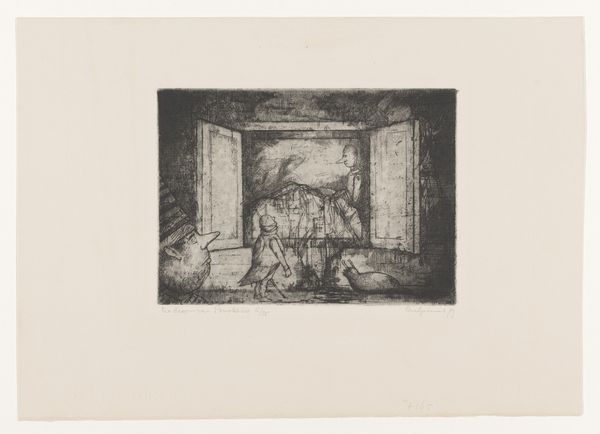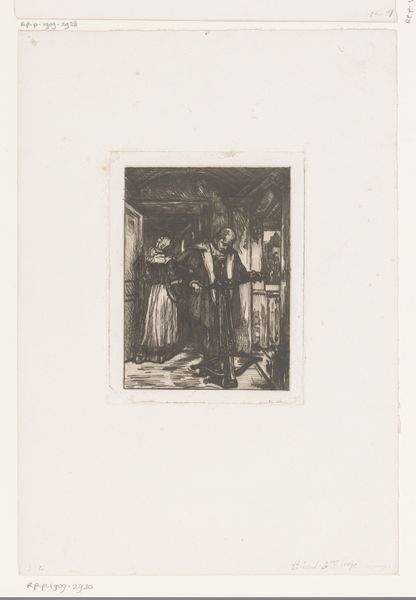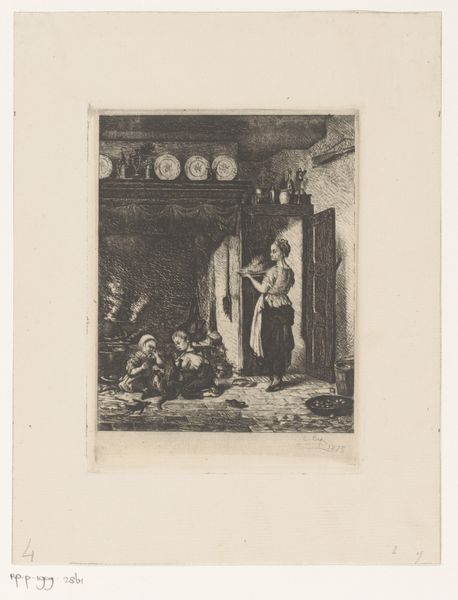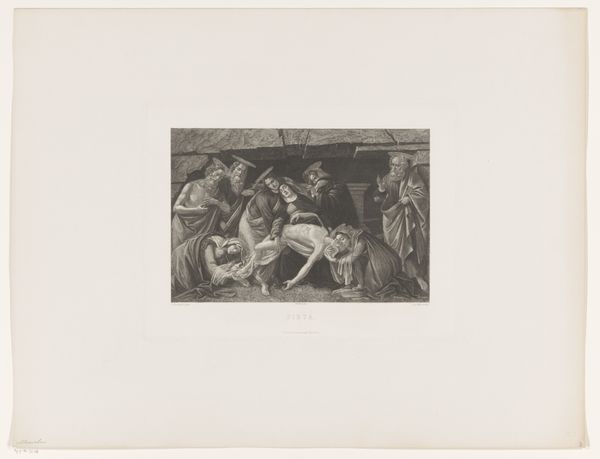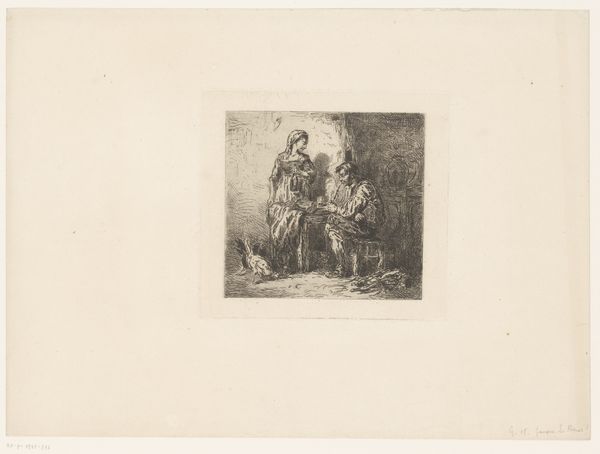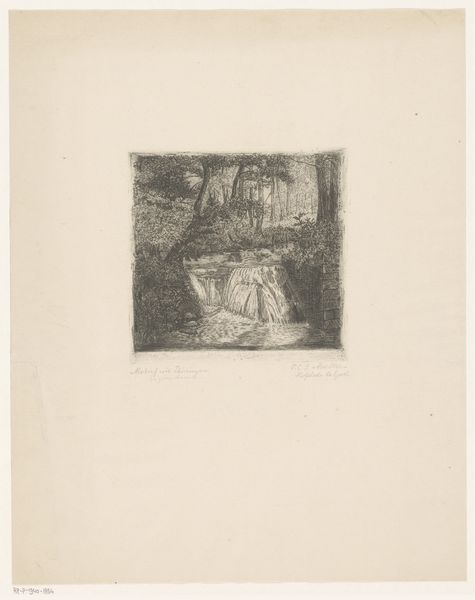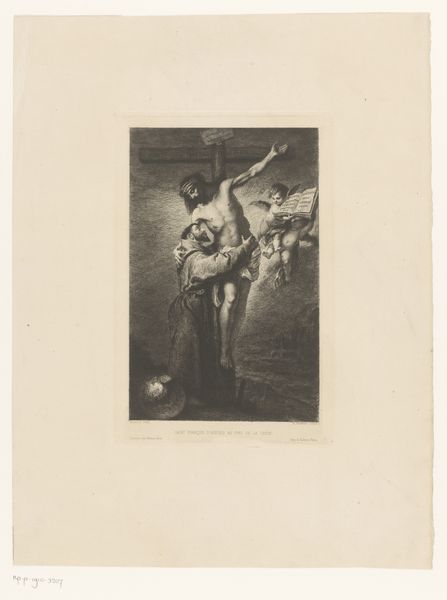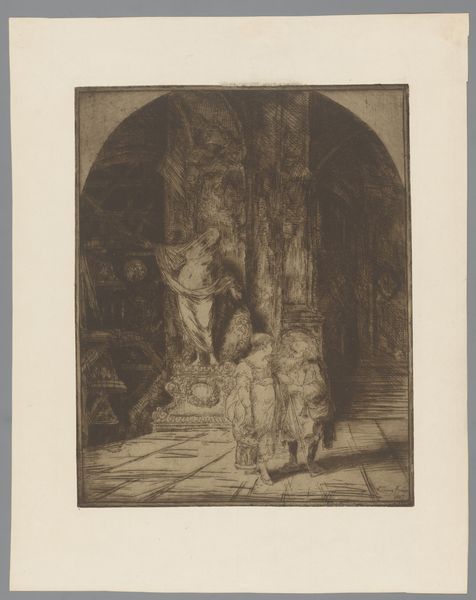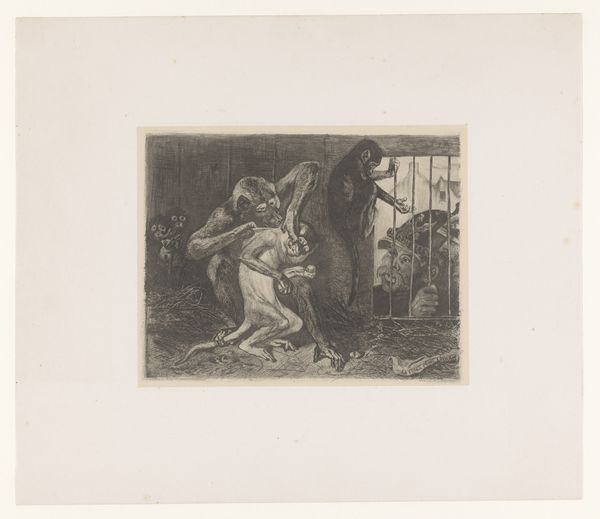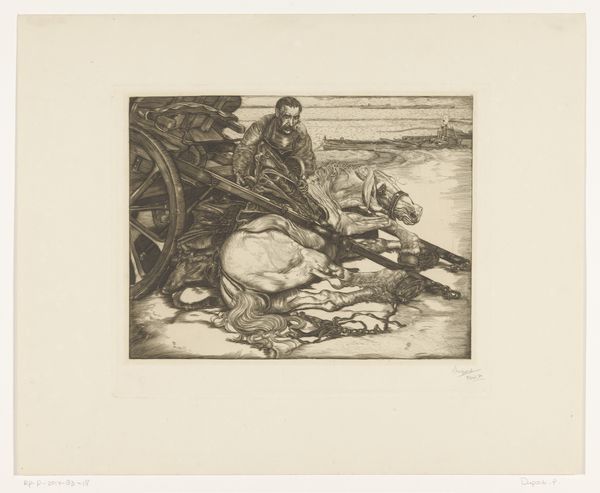
print, etching, engraving
#
pencil drawn
#
narrative-art
#
ink paper printed
# print
#
etching
#
pencil sketch
#
figuration
#
romanesque
#
pencil drawing
#
pencil work
#
history-painting
#
engraving
Dimensions: height 309 mm, width 504 mm
Copyright: Rijks Museum: Open Domain
Paul Adolphe Rajon created this print, "Claudius wordt vereerd na de dood van keizer Caligula," using etching techniques. This piece invites us to reflect on power, succession, and the construction of historical narratives in the Roman Empire. Rajon, living in 19th century France, perhaps saw parallels between the political intrigues of ancient Rome and the tumultuous history of his own time, marked by revolution and empire. The print depicts a moment of transition and uncertainty: Caligula's death creates a power vacuum, into which Claudius is thrust. Look at the figures surrounding Claudius. What does their body language suggest about their allegiances and ambitions? How does this scene portray the relationship between individual agency and larger historical forces? Are we looking at a moment of genuine respect, or a calculated move in a deadly political game? In his depiction, Rajon invites us to consider how historical events are shaped by individual actions, and how power is often a precarious and contingent thing.
Comments
No comments
Be the first to comment and join the conversation on the ultimate creative platform.
